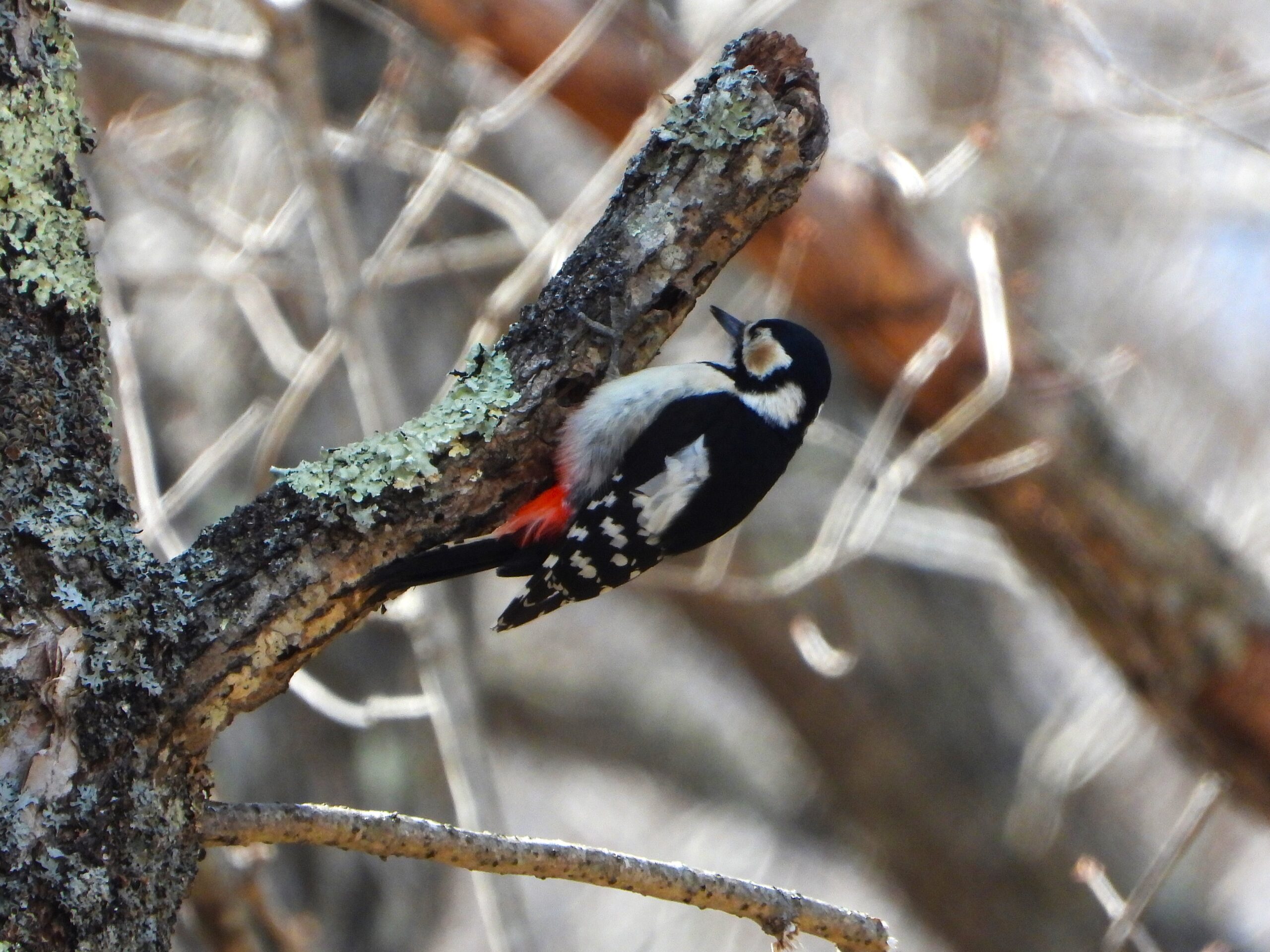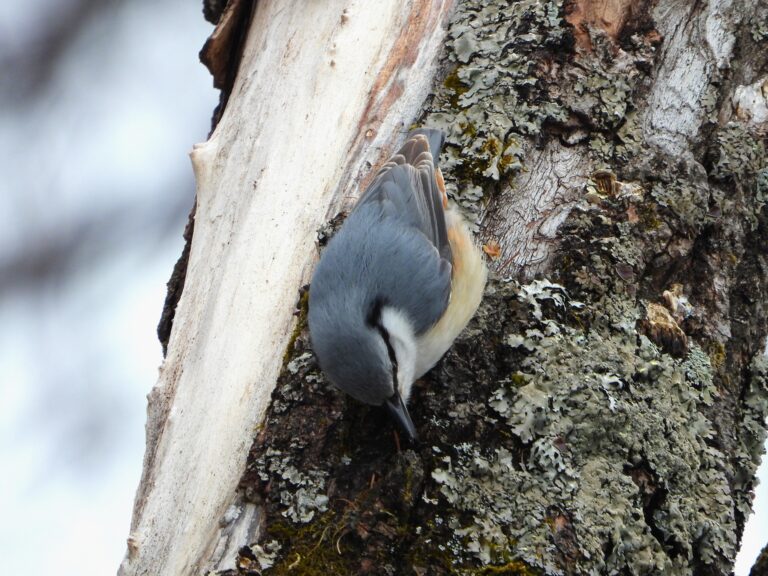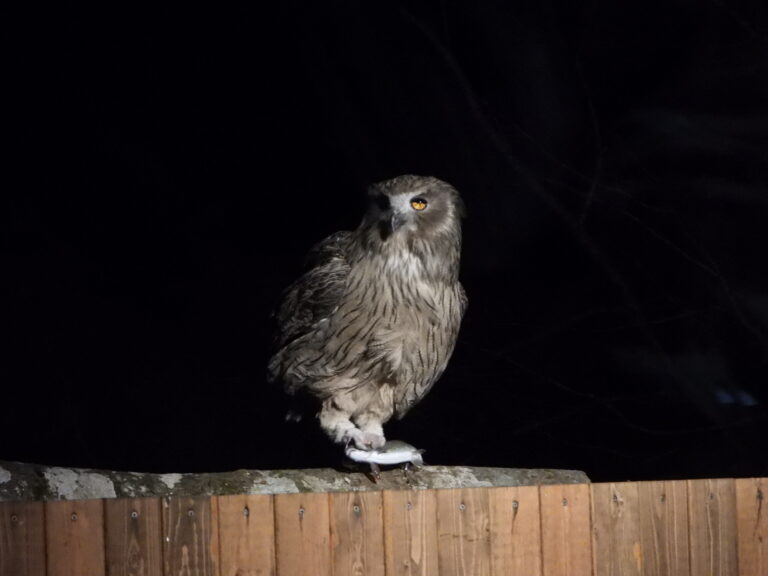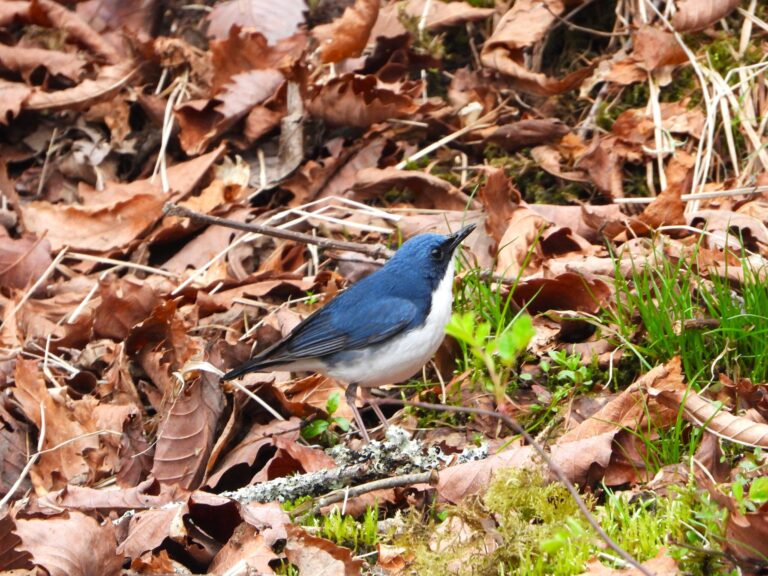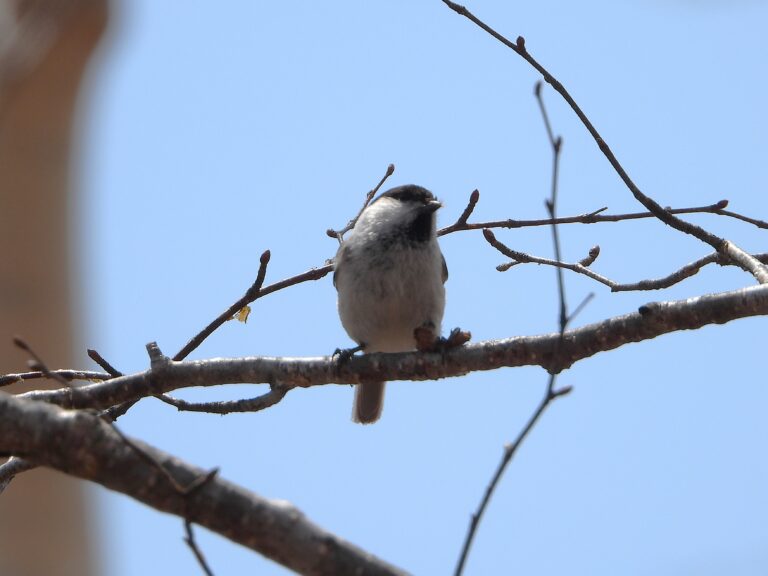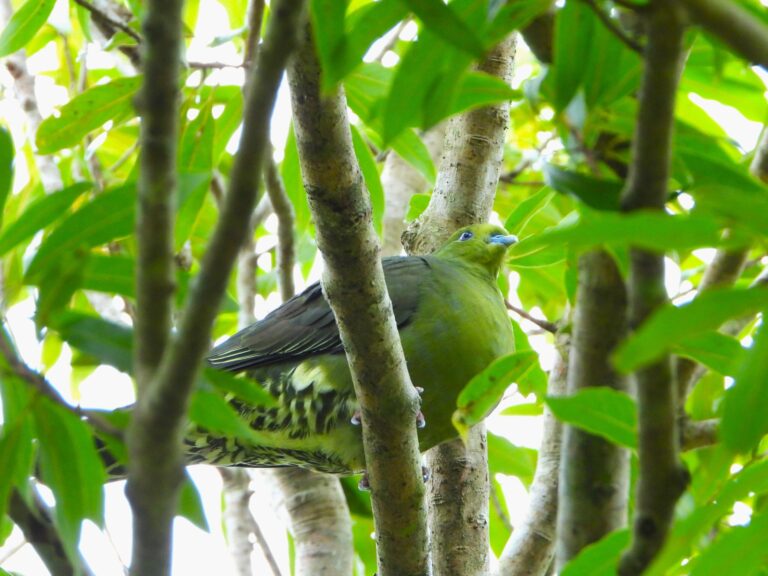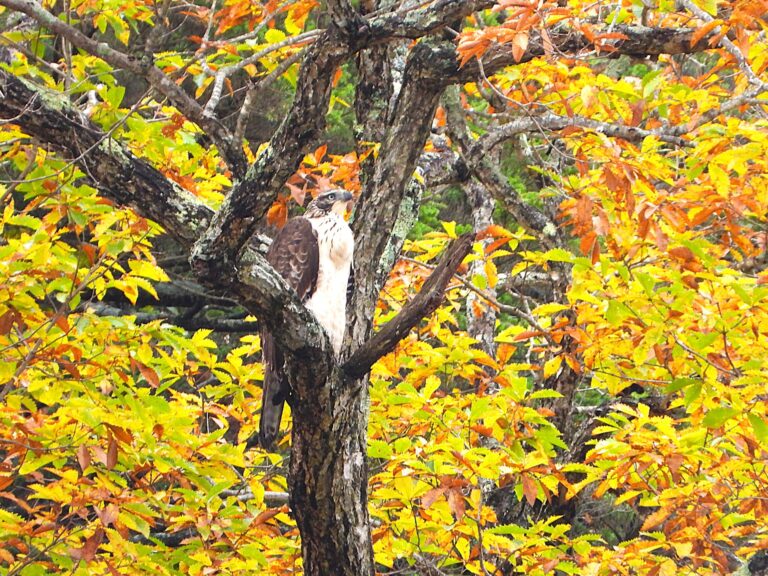Great Spotted Woodpecker (Dendrocopos major) – Wildlife of Japan
Introduction
A bold, black-and-white woodpecker with a vivid red vent, the Great Spotted Woodpecker is a familiar drumming presence across temperate Eurasia. In Japan, it is a year-round resident wherever mature forests remain, and its sharp “kik!” calls and rapid drumming echo through the winter woods.
Appearance
Medium-sized (about 23–24 cm). Upperparts are black with large white shoulder patches that form a distinctive V-shaped mark on the back, leaving the center dark — a key field mark that distinguishes it from the larger White-backed Woodpecker (Dendrocopos leucotos), whose back is mostly white.
Underparts are pale with a bright red vent. Males show a red nape patch (females lack this), while juveniles have a red crown. The wings are barred, and the tail is black with white spotting. The strong, chisel-like bill is well adapted for bark hammering and cavity excavation.
Identification
In Japan, the Great Spotted Woodpecker can be confused with the larger White-backed Woodpecker (Dendrocopos leucotos).
However, the Great Spotted shows a black central back with a V-shaped white patch across the shoulders, while the White-backed has an almost entirely white back.
The Great Spotted is also slightly smaller, with a sharper “kik!” call and greater tolerance of lowland forests and parks.
Habitat & Distribution
Globally, the species ranges from Western Europe to East Asia and North Africa, occupying broadleaf, mixed, and conifer forests as well as mature parks and woodland edges. It is largely resident, with some irruptive movements tied to cone crops in the north.
Japan: Resident in Hokkaido and Honshu, with small numbers in Shikoku; generally absent from Kyushu (rare or accidental there). Subspecies include D. m. japonicus (Hokkaido) and D. m. hondoensis (Honshu/Shikoku).
Where to See in Japan
Look for this species in mature mixed or broadleaf forests with standing dead wood and large trees for nesting. In Hokkaido, it occurs from lowland parks and shelterbelts to mixed forests; in northern and central Honshu, it favors montane and foothill woodlands. In Shikoku, encounters are localized and uncommon.
Your best opportunities are in late winter–spring, when drumming and territorial calls are frequent, and in autumn–winter around wooded edges and nut-bearing trees.
Behavior
Often ascends trunks and thicker branches, probing and chiseling for larvae beneath the bark. Powerful drumming on resonant limbs advertises territory and pair bonds; flight is undulating. Pairs maintain territories year-round in many areas.
Diet
Primarily insects and their larvae (especially beetles and ants) gleaned from bark and wood.
In colder months it readily takes seeds, nuts, and berries, and may visit feeders.
Reproduction
A cavity-nester: both sexes usually excavate a new hole in a dead trunk or large branch each season.
Clutch size is commonly 4–7 eggs; incubation and chick-rearing are shared, with the male often contributing heavily.
In Japan, the single annual breeding attempt is typically in spring to early summer.
Conservation
IUCN: Least Concern. The global population is large and stable to increasing in parts of Europe.
In Japan, local presence depends on the availability of mature woodland and standing dead trees; preserving old-growth elements in parks and forests supports this species.
Author’s Impression
On quiet winter mornings I often hear the bird before I see it — the crisp “kik!” echoing through the trees, followed by a burst of drumming from a hollow limb.
When sunlight hits that bright red vent against snow or mossy bark, it’s a striking flash of color in the forest.
→ See also: White-backed Woodpecker (Dendrocopos leucotos) – Wildlife of Japan

